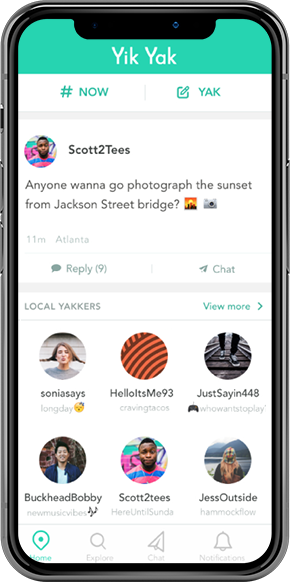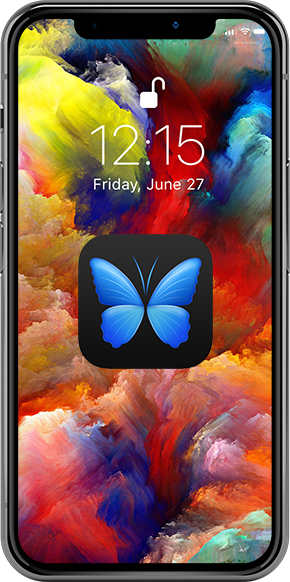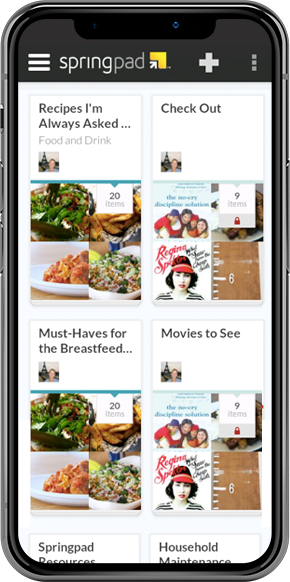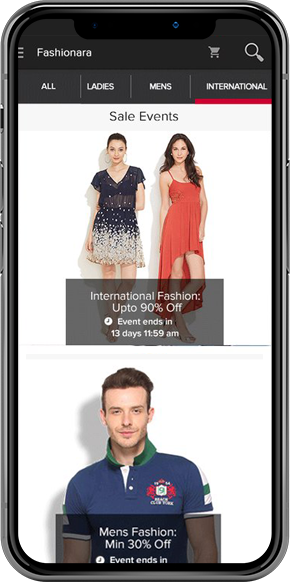8 reasons why apps fail
Modern day lifestyles warrant the use of apps for a range of tasks from some as grueling as managing finances to ones as simple as connecting to a loved one instantaneously. According to a Businessofapps.com report, the total number of mobile app downloads in 2017 was 197 billion. An honest consumer is spoilt for choice with a total of 3.8 million apps available for download for Android users and 2 million for Apple users. The growing popularity of the apps has got all the businesses counting on creating a great user-friendly app that connects them to the customer and adds to the ROI. To make an app hit with the users, it needs to be ‘one in a million’ quite literally. However, most apps fail to make a mark today.
We at Promatics, take pride in having worked with vivid businesses across the globe which has contributed to our knowledge base widely, about what goes into the success of an app. While you may have a great idea for an app, it might be something not many people want. Are you going overboard with too many things going on in the app? Is it making any money? Here, we bring you valuable insights into why most apps fail.
#Reason I: Flawed/Inadequate Consumer Research
Example – Google Notebook
In the market to give Microsoft Notepad a run for its money, Google Notebook was projected to be a note taker’s dream. Google failed its users with a downgraded product that lost its appeal soon after it was launched. Users found it very difficult to use and expected something that was more convenient out of it. It did not support other platforms to ease a user’s vows. Neither did it support features like voice recordings which its competitors did. It lost charm speedily.
It’s no secret that there is extreme competition in the app world to attract a user’s attention. With so many options, mobile app engagements are short lived with hardly any scope for a second chance, if it goes wrong at first. It’s crucial for businesses to gain an insight into how to indulge consumers when it comes to apps. What factors prompt users to download or delete an app? How phone’s storage space affects a mobile app download? This makes it imperative for app developers to sponsor in-depth research to unearth insights that help create value and solve pain points in app usage. Most developers excel at technology but fail to sell the product because of lack of knowledge about consumer’s needs and expectations from the app.
# Reason II: Not Starting Out with A Minimum Viable Product (MVP)
Example – Google Wave
Hyped even before its launch Google Wave was a live, shared space on the web where people could discuss and work together using richly formatted text, photos, videos, maps and more. Clearly, it promised a bit too much and was flooded with features which drove a newbie user crazy. The product came out as complex and a user needed a lot of time to understand how it worked. It did not begin as MVP and came to a halt just after 15 months of its launch.
A jack of all trades is seldom a master of any. The adage holds true when it comes to the app business too. It is preached that apps must start out as Minimum Viable Products (MVPs) i.e. simply, with their crucial features to solve a user’s problems in a very basic manner. No matter how much money you as a developer are ready to invest in the building of an app, you must launch it with very basic features without any added fluff. This helps to bring out your core value to the users very distinctly. Most developers shell out tons of money and time into building an app that may or may not have any demand. Others run out of money post the expensive development stage for advertising and further development. Starting out with basics chops such risks off, and saves you enough money to invest later in development or marketing after you know what it lacks.
#Reason III: Non-User-Friendly Interface
Example – Color
Aspiring to be the coolest photo sharing app on the market, Color took pride in merging users’ photo-streams together. The merging happened on the basis of location or for users who were good friends. The idea was new and engaging as it can be! Along with funding of 41 million from investors in the very first round, Color had everything great; except the product, their business was all about. The app was not user-friendly at all. The lack of privacy and difficulty of usage agitated the users that they gave up on it. Instead of fixing the problematic features of the app, the company struggled to redefine its business model. It suffered a quick and painful demise within one year of its inception.
It’s fair to claim that technology and design hand in hand make a huge impact on user experience when it comes to apps. More often than not apps fail to deliver the kind of seamless experience a user expects out of modern-day innovations and thus lose him to rivals. No developer wants factors like poor responsiveness, inadequate workflow design or sloppy user interface to come in the way of a successful app enterprise. Make sure you put in place suitable UI/UX practices that are best suited for the platform you plan to use. To perform better than a customer’s expectation, successful developers make use of usability testing. Usability testing ensures that the web or mobile app being developed is the best possible version of itself and offers the user a seamless experience. The testing gauges the user behavior and analyzes what’s working and what is not. Ensuring usability testing for your app reduces time and cost of development and even post maintenance cost, thus improving the ROI.
#Reason IV: Pivot Failure
Example – Yik Yak
One of its kind location-based anonymous posting app, Yik Yak became the talk of the town in 2013. Users could post anonymous 140-character posts around their area that other users in that area could see. A user could also see people’s posts in other areas, but you could only post/interact with other people’s posts in the area they are currently in. Anonymous posting brought with it public image problems for Yik Yak, along with cases of cyberbullying. Yik Yak tried to pivot from the model that sort them so much popularity; by changing the mission from anonymous posting to meet up and hang out with those people who are around you. They also got rid of the anonymity factor by introducing mandatory handles. The pivot clearly did not go well with its users and spelt ‘Failure’.
As any other innovator, app developers sometimes tend to doubt the product they are developing. The self-doubt and expectation pressure makes them pile extra features onto the app that may be completely unnecessary and uncalled for. Planning is a crucial component of all businesses and needs to define the goals of the business, the client market you are going to cater to, financial resources, thorough market analysis and revenue generation estimates. After the plan has been finalized all your actions must be driven towards the aim decided upon. If you try to pivot the nature of the business model or any of the factors set above; its an invitation for doom. Not only does a midway pivot confuses the team but also discourages the customers who associated with the product for some reason and are lead into another.
#Reason V: Marketing Failure
Example – Everpix
What was proclaimed to be the best photo organisation app of its times; Everpix sorted and organised the photos while storing them online for you. The stand out feature of the app was its algorithm that pulled out the best pictures for you. The app had everything a great app needed. It was user-friendly, had a lot of functionality and additional fun features to engage users. A large sum from the funding was spent on app improvement and it took about one and half year. By the time it made it to the market, most parts of the funding were spent and it was too late to raise more of it. Without an appropriate marketing plan, the app never reached the users it intended to please.
Regardless of the business you are dealing with, marketing is crucial. It is a channel which helps demonstrate to the users the core functionality of the product or services you intend to sell. Techies begin with a great idea when they develop an app and trust it to sell itself. But it doesn’t happen that way. A proper marketing plan is mandatory to introduce a customer to your app. The role of marketing is unparalleled in the app world that is steeped in intense competition for the user’s attention.
#Reason VI: No Focus on Retention Rate
Example – Netflix
Proud of its bustling 90 million customers base, Netflix is a subscription-based service that lets you view your favourite shows and movies. With so much competition in the genre, business experts often wonder how Netflix manages to retain its existing customers in the long and short term. Each month brings along a choice for its users to stay or leave, but what makes them stick? Netflix has curated a large library of original and licensed content and the team works incessantly to gain a deeper insight into user preferences. They track figures like how many users watched a particular episode, how many users watched the whole series, the gap between watching two episodes and so forth. Such insightful research paves the way to successful customer engagement and retention strategies. The app recommends shows to users based on their personal viewing habits and keeps the subscription-based business thriving.
Leaving afloat a nice product in the app market is not the all and the end all. It’s only half the battle won. According to stats published by Localytics, 63% of users don’t use the app one month after they downloaded it. A hoard of alternative apps and negligible switching costs leaves the user spoilt and greedy when it comes to choosing apps. Developers rarely put much thought into a user retention strategy that can benefit them in long run. It has become imperative that an app conveys its value early in the usage process to keep a user engaged for long and to keep him coming back for more. Personalizing the user experience to some degrees is the key to retention today.
#Reason VII: Unsuccessful Monetization
Example – Springpad
Springpad launched itself in 2008, well before Pinterest or Evernote became user favourites and was ahead of its time in terms of app technology. The app was a user’s favourite when it came to the organisation of recipes, movies line up, home-improvement and interior projects. The main concept of the app was that it allowed users to clip items they like for purchase at a later stage. The app was a hit, it was user-friendly and featured prolific content except that it did not know how to monetize itself. The founders and developers struggled with avenues like affiliate marketing, ad support and sponsorships to bring home some ROI but to no use. The app that had carved out a niche for itself in the app space died a quick death because of lack of a proper monetization strategy from the start.
A business thrives on revenue streams and profits. However, techies often struggle with garnering money out of an app, because in reality, the options to do so are few and barely profitable. App developers and business owners are so caught up in developing a good product that they ignore the need for a proper monetization strategy from the very beginning. Profit bearing monetization is based on insightful analysis of trends and never on estimates and assumptions. More often than not developers are clueless about what features of the app must be offered for free to the user and when to generate maximum revenue. Early references to the monetization plan help developers to incorporate adspace into the design so that it does not sabotage the seamless user experience every business aims to deliver. Even at a later stage of app development, app developers often do not have knowledge of the options that can be explored for app monetisation. Avenues like poll to pay, paywalls, in-app-purchases, sponsorships need contributions from seasoned app development experts to be successful in monetizing an app.
#Reason VIII: Not Competitive Enough
Example – Fashionara
A fashion app for flash sales of the brands associated with it, Fashionara was Bangalore based and much loved by its customers. It was backed by former Reliance Trends CEO Arun Sirdeshmukh and former Times Internet Chief Technology Officer Darpan Munjal. The business scaled in apparel, accessories and footwear segment after huge popularity. But with the advent of other high-fashion app portals in the market, the app saw a decline in its appeal to users and finally had to shut operations in May 2016.
No matter how good your idea is, it is likely someone else is working on a similar project too. Even though it might seem like the project you are working on stands out initially, it is likely someone would build a similar project to compete with you. Users will switch to something better or cheaper sooner than you would ever realize. Developers are so engrossed in the development process that they fail to invest in research about their competitor’s failure and successes. That is one of the main reasons why they never reach a unique value proposition with their clients. Apart from counting client’s feedback, keep a close watch on the what is up in the market.
Hence, we can conclude that a successful app is so much more than a just a great idea. It is well conceptualized, is an MVP, has a workflow plan, needs research, testing and thorough marketing. Any app development process that lacks the following features is likely to fail. All the factors that contribute to the failure of the app are crucial as evident in the examples listed above. Never let these basic shortcomings like ignorance of user feedback, lack of marketing skill set, the lack of market research or monetization plan be the doom for your app.
Still have your concerns?
Your concerns are legit, and we know how to deal with them. Hook us up for a discussion, no strings attached, and we will show how we can add value to your operations!





